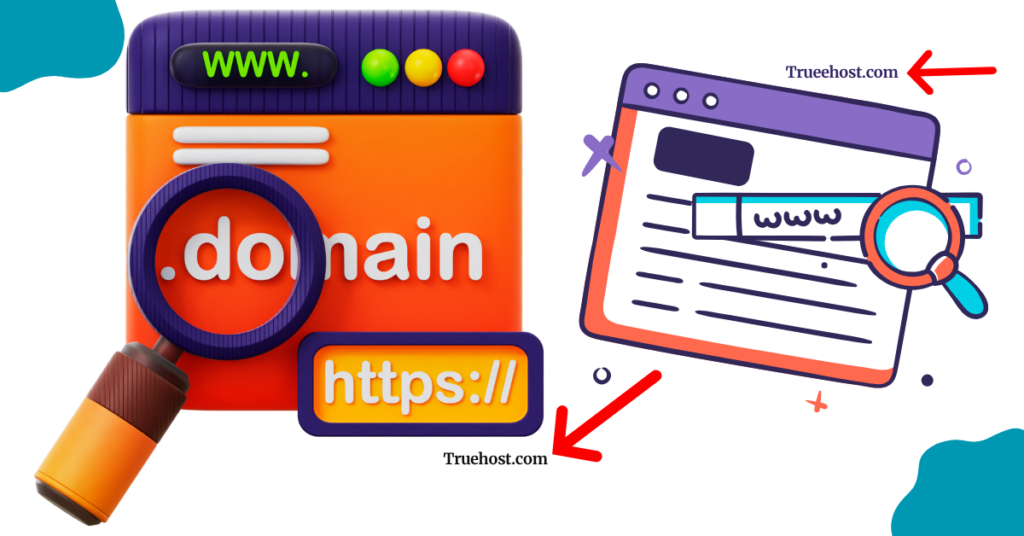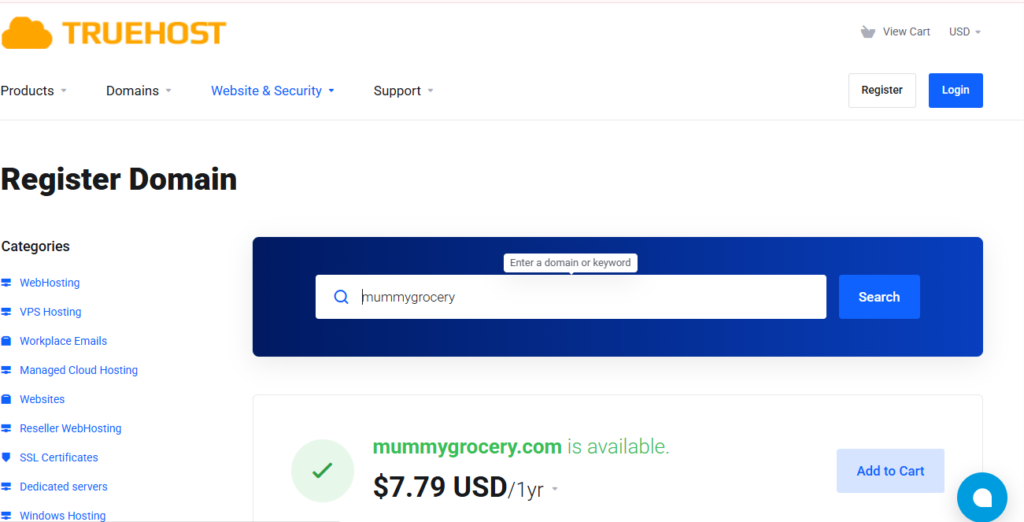When you look for a domain name for your website, you want something unique and safe. But sometimes, people called domain squatters register the name before you can.
This problem is known as domain squatting (or domain name squatting), and it can make it harder to start a website or protect your brand name.
This guide explains how to avoid domain squatting in 2025, how it happens, and what steps you can take to protect your brand.
It also covers what to do if someone already owns a confusingly similar domain to yours.
What Is Domain Squatting and Why Does It Matter

Domain squatting, or cybersquatting, occurs when someone registers a domain name they don’t plan to use only to sell it later at a higher price.
It’s a similar trick called typosquatting that happens when someone buys a misspelling variant of a popular domain, hoping to get traffic from typing errors.
Squatters often act in bad faith registration, meaning they register domains just to block others or profit unfairly. They target brand names, trademarks, or trending keywords.
The result is a high risk of brand damage, lost trust, and higher domain management costs for you later.
When a squatter owns your name, it can hurt your search engine results.
A fake or parked site may confuse users, reducing better domain visibility and lowering your brand protection score.
How Domain Squatters Take Advantage of Name Searches
Many domain investors or opportunists use automated tools to track new searches. When you look up a new name on a public website, they can analyze it, quickly register it, and hold it.
This makes it hard for you to secure it later.
Some buy every Top-level domain (TLD) related to your idea, like .com, .net, or .org, and keep them in a domain portfolio. This creates fake scarcity and raises prices.
Others copy your brand name with a domain extension (TLD) change, like example.co instead of example.com, making a confusingly similar domain.
If your trademark or brand is involved, that becomes Cybersquatting under the law.
Typosquatting and brand protection also overlap, because squatters use misspellings to steal traffic or run scams.
Understanding how they operate helps you mitigate risk early and plan a natural domain name selection strategy.
Key Steps to Avoid Domain Squatting When Choosing a Name
If you’re searching for a domain name availability, follow these steps to prevent domain name squatting and keep your brand safe.
1) Register Fast and Lock It Down
Once you find the right domain name, register it immediately. Every hour counts because squatters use bots that quickly identify and lock trending searches.
After you register your domain name, enable a domain transfer lock. This prevents anyone from transferring ownership of your domain without permission.
You can also check the domain registration date and domain ownership history to see if a name was once held by a domain investor or used for spam.
Avoid names with bad records to reduce spam potential and ensure low domain squatting risk.
2) Get All Major TLD Variations
Always register key top-level domain variations. Buy your name in .com, .net, .org, and local TLDs such as .us. This domain variation coverage limits copycats who try to mimic your site using other domain extensions.
A solid domain variation registration strategy gives you strong brand protection and improved domain security. It also ensures better memorability, so users don’t get lost on fake versions of your website.
3) Use a Reputable Registrar
A trusted domain registrar makes a big difference. They offer privacy protection, domain renewal reminders, and clear renewal status updates.
A good registrar helps you manage your domains easily, reducing domain management cost and legal exposure.
Avoid unknown sellers who might resell your name. Choose a transparent system for tracking, renewing, and securing domains.
How to Monitor and Protect Your Domain from Squatters
Even after you secure your name, you should monitor it often. Domain expiry risk management is important because squatters watch for expiring names daily.
1. Set Renewal Reminders and Auto-Renew
Most losses happen when owners forget to renew.
Set your domain to auto-renew or mark calendar alerts. This prevents a costly domain expiry.
When a name expires, it returns to public auctions, the perfect time for squatters to grab it.
Follow a domain renewal best practice plan to keep your ownership stable. This will also help you avoid bad faith registration and ensure enhanced trademark defense.
2. Track Brand Mentions and Domain Variants
Use a domain monitoring service or simple tools like DNSTwister to track domain look-alikes. These can alert you to misspelling variants or suspicious new sites using your name.
You can also monitor your domain portfolio size to stay organized and evaluate which names need extra attention.
A brand domain monitoring service gives early warnings, helping you adapt and protect your brand before it’s too late.
Legal Options If Someone Squats on Your Name
If someone already holds your name, there are legal consequences. You can take action using the Uniform Domain-Name Dispute-Resolution Policy (UDRP) or the Anticybersquatting Consumer Protection Act (ACPA).
These laws help victims of cybersquatting recover their domains. The UDRP works globally and is managed through ICANN. You’ll need to analyze and assess proof of bad faith registration, show your trademark rights, and prove the other domain is confusingly similar to yours.
The ACPA applies mainly in the U.S. and allows you to file lawsuits for damages. These options help mitigate losses and reinforce your brand protection.
Remember, every case depends on proof. So, keeping a record of your domain registration date, renewal status, and ownership history supports your claim.
Best Practices for Safe and Smart Domain Name Searches
When you start looking for a name, think smart. Squatters often monitor open search tools and can register the name you check. To stay safe, use trusted sources or incognito modes during searches.
a. Use Trusted Domain Search Tools

Some tools share search data with partners. Choose registrars that don’t leak name ideas. This supports an algorithm-neutral domain strategy, meaning no hidden triggers that expose your interests.
Avoid free name generators that lack privacy policies. Always evaluate how secure their systems are before you search.
b. Think of Long-Term Use
Good domains are short, clear, and timeless. A shorter domain length improves readability and reduces errors.
Combine domain keyword relevance with natural domain selection. The domain should match your brand but not sound forced.
Keep domain management costs low by choosing what you’ll actually use. Owning too many domains can confuse your audience and stretch your budget.
Focus on quality over quantity.
c. Keep Ownership Organized
Keep all your domains under one secure account with two-factor login. Regularly analyze and manage your list to spot gaps and renew early.
This habit supports better domain visibility, strong brand protection, and improved domain security over time.
A consistent routine reduces domain portfolio risk mitigation costs and gives you peace of mind.
Stay Ahead of Domain Squatters
Domain squatting isn’t new, but its methods change every year. In 2025, bots and domain investors are faster, smarter, and global.
But you can still stay ahead.
When you register, renew, and monitor your domain name wisely, you protect your brand and secure your name for the long term.
Every small action, from enabling a domain transfer lock to checking domain expiry dates, lowers your risk and builds trustworthiness for your visitors.
Regarding cybersquitting, prevention is easier and cheaper than legal battles.
So, be alert, stay quick, and own your digital identity confidently.
Ready to secure your perfect domain and keep squatters away?
With Truehost, you can register, manage, and protect all your domain names in one safe place.
Enjoy strong brand protection, better domain visibility, and low domain squatting risk — all while keeping your brand name safe for the future.
Avoid Domain Squatting FAQs
Domain squatting (domain name squatting) happens when someone registers a domain name that includes another person’s brand name or trademark to sell it later for profit. It’s an unfair practice that hurts brand protection and online trust.
Yes. Domain squatting is illegal under the Anticybersquatting Consumer Protection Act (ACPA). Victims can also file a complaint using the Uniform Domain-Name Dispute-Resolution Policy (UDRP) to recover their domain and protect their trademark rights.
To avoid domain squatting, register your domain name early, buy key top-level domain (TLD) variations, use a trusted registrar, and enable the domain transfer lock. Always set domain renewal reminders to stay protected from squatters.
If someone already owns your brand name, first assess their intent. If it’s a bad-faith registration, you can file a complaint under the UDRP or ACPA. Legal action helps mitigate loss and reclaim your name.
Typosquatting happens when someone buys a misspelling variant of your domain name. This confuses visitors and can hurt your brand protection. To protect yourself, buy similar domains and use a domain monitoring service to track copies.
Yes. If your domain expiry lapses, squatters can register it instantly. Always use auto-renew or reminders as a domain renewal best practice to avoid losing ownership and facing high resale prices later.